BETTY BOOP [unfortunately this shop has ceased trading]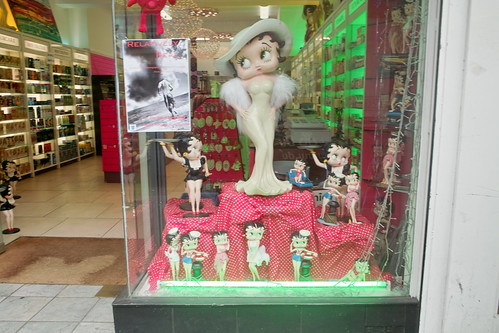
Image by infomatique
Betty Boop made her first appearance on August 9, 1930 in the cartoon Dizzy Dishes, the sixth installment in Fleischer's Talkartoon series. She was originally designed by Grim Natwick, a veteran animator of the silent era who would become lead director and animator for the Ub Iwerks and Walt Disney studios. The character was modeled after a combination of Helen Kane,the famous popular singer of the 1920s and contract player at Paramount Pictures, the studio that distributed Fleischer's cartoons and Clara Bow who was a popular actress in the 1920s who had not managed to survive the transition to sound because of her strong Brooklyn accent, yet became a trademark for Betty. By direction of Dave Fleischer, Natwick designed the original character in the mode of an anthropomorphic French poodle. The character's voice was first performed by Margie Hines, and was later provided by several different voice actresses including Kate Wright, Ann Rothschild (a.k.a. Little Ann Little), Bonnie Poe, and most notably, Mae Questel who began in 1931 and continued with the role until 1938.
While the original design was rather ugly and awkward, she was developed further after Natwick's departure under Berny Wolf, Seymour Kneitel, Roland Crandall, and Willard Bowsky. Betty became finalized as completely human by 1932 in the cartoon Any Rags. Her floppy poodle ears became hoop earrings, and her black poodle nose became a girl's button-like nose. Betty appeared in ten cartoons as a supporting character, a flapper girl with more heart than brains. In individual cartoons she was called "Nancy Lee" and "Nan McGrew", usually served as a girlfriend to studio star Bimbo.
Although it has been assumed that Betty's first name was established in the 1931 Screen Songs cartoon Betty Co-ed, this "Betty" was, an entirely different character. Though the song may have led to Betty's eventual christening, any references to Betty Co-ed as a Betty Boop vehicle are incorrect. (The official Betty Boop website describes the titular character as a "prototype" of Betty.) In all, there were at least 12 Screen Songs cartoons that featured either Betty Boop or a similar character.
Betty appeared in the first "Color Classic" cartoon 'Poor Cinderella', her only theatrical color appearance (1934). Betty made a cameo appearance in the feature film Who Framed Roger Rabbit (1988), in her traditional black and white, saying work had "gotten slow since cartoons went to color," but she still had "what it takes."
Betty Boop became the star of the Talkartoons by 1932, and was given her own series in that same year beginning with Stopping the Show. From this point on, she was crowned "The Queen of the Animated Screen." The series was hugely popular throughout the 1930s, lasting until 1939. But her best appearances are considered to be in the first three years due to her "Jazz Baby" character with innocent sexuality, which was aimed at adults. However the content of her films was affected by the National Legion of Decency and the Production Code of 1933. The Production Code guidelines imposed on the Motion Picture Industry placed specific restrictions on the content films with references to sexual innuendo. This greatly affected the content of the films of Mae West at Paramount, as well as the Betty Boop cartoons until the end of the series.
Betty Boop was the subject of additional publicity in 1934 when Helen Kane launched a major lawsuit against Max Fleischer and Paramount Studios for the "deliberate caricature" that produced "unfair competition" that exploited her personality and image. While Miss Kane had risen to fame in the 1920s as "The Boop-Oop-A-Doop Girl" star of stage, recordings, and films for Paramount, her career was over by 1930. Interestingly, Paramount promoted the development of Betty Boop following Miss Kane's decline. As Miss Kane's claims seemed on the surface to be valid, it was proven that her appearance was not unique in that she and the Betty Boop character bore a resemblance to Clara Bow, another major star of Paramount. But the largest evidence against Miss Kane's case was her claims to the origins of her singing style. While an outgrowth of Jazz "scat singing," testimony revealed that Miss Kane had witnessed a black performer, "Baby Esther" using a similar characterization in an act at the famous Cotton Club nightclub in Harlem some years earlier. An early test sound film was discovered of Baby Esther performing in this style, disproving Miss Kane's claims.
While "Betty Boop" continued in production for the next five years, her best films had already been released, since her personality was greatly neutralized from that point on. Due to a combination of policies affected by the Production Code and also changes in the content of Paramount's films also affected Betty's later appearances. While her later cartoons were more slick and consistently produced, they relied heavily on self-consciously cute and moralistic preaching, making Betty more of a "good citizen" maiden aunt spinster separated from any references to sexuality, and innocent girlishness. Oddly, Betty became a secondary character in her own cartoons, which began to center on the adventures of her pet dog, Pudgy, and the eccentric inventor, Grampy, who bore an interesting resemblance to Koko the Clown.
While the period that Betty represented had been replaced by the the "Big Bands" of the Swing Era, Fleischer Studios made an attempt to develop a replacement character in this style in the "Betty Boop" cartoon, "Sally Swing" (1938). While a concept with potential, the character was not well conceived and failed to project an energetic personality of the type later developed by Tex Avery at MGM, or the type emerging from Betty Hutton, a major Paramount star and symbol of the "Swing" and "Jitterbug" craze.
The last "Betty Boop" cartoons were released in 1939, and a few made attempts to bring Betty into the "Swing Era." In her last appearance, "Rhythm on the Reservation" (1939), she drives an open convertible labeled, "Betty Boop's Swing Band" while driving through a settlement of Native Americans. While in some ways considered "politically incorrect" by today's standards and sentiments over racial stereotypes, Betty introduces the natives to "Swing Music" and creates a "Swinging Sioux Band." The last listed title in the series was "Yip-Yip-Yippie," but it was a one shot cartoon without Betty.
In 1955, Betty's 110 cartoon appearances were sold to television syndicator U.M. & M TV Corporation in 1955, which was acquired by National Telefilm Associates (NTA) the following year. NTA was reorganized in the 1980s as Republic Pictures, which is presently a subsidiary of Viacom, the parent company owning Paramount. Ironically, Paramount, Boop's original home studio (via sister company Republic), now acts as theatrical distributor for the Boop cartoons they themselves originally released. Television rights are now handled by CBS Television Distribution, successor to various related companies, including Worldvision Enterprises, Republic, and NTA.
Betty Boop appeared in two television specials, "The Romance of Betty Boop" (1984) and "The Betty Boop Movie Mystery" (1989), as well as cameo appearances in television commercials. And while television revivals were conceived, nothing materialized to the degree originally planned.
While the animated cartoons of "Betty Boop" have enjoyed a remarkable rediscovery over the last 30 years, official home video releases have been limited to the VHS collector's set of the 1990s. In spite of continue interest, no official DVD releases have occurred to date (Lionsgate Home Entertainment, under license from Republic, owns the video rights to the Boop cartoons). Ironically, the image of Betty Boop has gained more recognition through the massive merchandising license launched by the heirs of Max Fleishcer, with audiences today unaware of Betty's place in cinema and animation history.
Gotye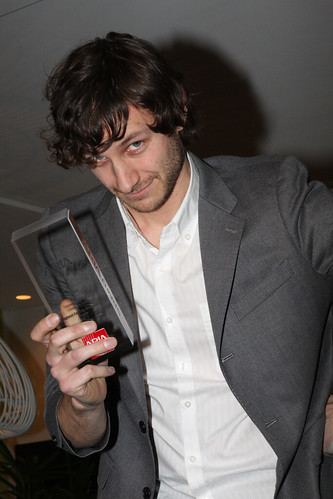
Image by Eva Rinaldi Celebrity and Live Music Photographer
ARIA Chart Awards: Red Carpet; Sydney, Australia
The ARIA #1 Chart Awards event has kicked off in Sydney today at the Ivy Bar in George St.
Many of Australian music's biggest stars and emerging performing artists were there including Missy Higgins, Gotye, Karise Eden and Reece Mastin!
The event was created to honour and showcase the Australian artists who have snatched a #1 single between August 2010 and 2012.
Karise Eden lead the way at the ceremony, with an massive six weeks at number one for her debut 'My Journey' and was followed by artists as diverse as The Wiggles, Gotye, AC/DC, Bliss N Eso, Guy Sebastian, Missy Higgins, Hillsong, Mirusia and more!
A new addition to the list was this week's chart-topping group, Justice Crew, who've rocketed to the pinnacle of the ARIA Singles Chart with their new hit 'Boom Boom'.
There were a number of impressive live performances at the event today, including Reece Mastin doing a version of 'Shout It Out.'
Winners:
SINGLES:
Guy Sebastian (featuring Eve) - Who's That Girl
Gotye (featuring Kimbra) - Somebody That I Used To Know
Reece Mastin - Good Night
Karise Eden - Stay With Me Baby
Reece Mastin - Shout It Out
ALBUMS:
Bliss N Eso - Running On Air
Drapht - The Life Of Riley
Gotye - Making Mirrors
Hilltop Hoods - Drinking From The Sun
Keith Urban - The Story So Far
The Temper Trap - The Temper Trap
Missy Higgins - The Ol' Razzle Dazzle
Karise Eden - My Journey
MUSIC DVDS:
Hilltop Hoods - Parade Of The Dead
Powderfinger - Sunsets Farewell Tour
The Wiggles - Ukelele Baby!
Miriusa (featuring Andre Rieu)- Always And Forever
AC/DC - Live At River Plate
Hillsong Live - God Is Able
Parkway Drive - Home Is For The Heartless
News Update:
Today in Sydney, the Australian Recording Industry Association (ARIA) held its #1 Chart Awards, which recognise Australian acts which topped the singles, album or music DVD charts between August 2010 and August 2012. ARIA is pleased to advise that Australian performers ran up a total of 61 weeks on top of one of those three charts. But when it comes to selling individual tracks, the picture is not as positive.
Over that 104-week period, just 16 weeks had an Australian song at the top of the charts — and half of that figure is a single track. The following is a list of performers that managed that:
‘Who’s That Girl’, Guy Sebastian featuring Eve (2 weeks)
‘Somebody That I Used To Know’, Gotye featuring Kimbra (8 weeks)
‘Good Night’, Reece Mastin (1 week)
‘Stay With Me Baby’, Karise Eden (1 week)
‘Shout It Out’, Reece Mastin (1 week)
Websites
ARIA Awards
www.ariaawards.com.au
Australian Recording Industry Association official website
www.aria.com.au
Ivy Bar
www.merivale.com.au/ivybar
Eva Rinaldi Photography Flickr
www.flickr.com/evarinaldiphotography
Eva Rinaldi Photography
www.evarinaldi.com
Music News Australia
www.musicnewsaustralia.com
Elise.O-1.jpg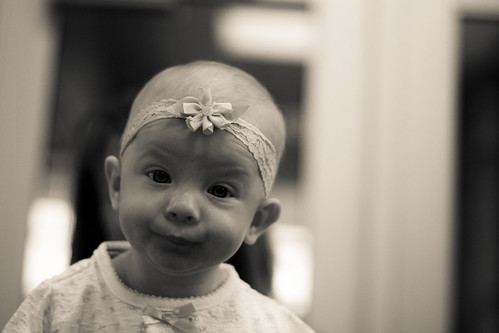
Image by Miss Wetzel's Art Class
In this photo the baby is in the left third of the picture followin ght rule of thirds. I used a small aperture to create a shallow depth of field. My shuuter speed was 1/250. When I edited this photo I set it to an automatic edit in lightroom and brought up the contrast. This is art because I had to arrange my photo, control my shutter speed and aperture and edit my photo.
Cinderella II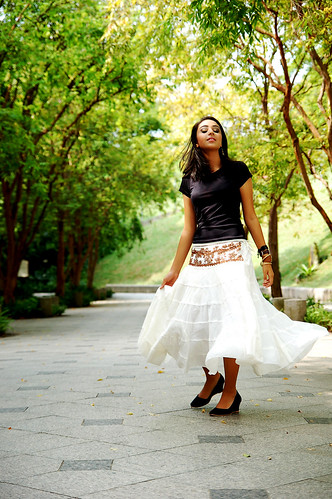
Image by imchaudhry photo
©2009 Imran Chaudhry All Rights Reserved.
I like the colours here. No colours were edited. Power of the Tamron baby! :D
My composition not the greatest, but i just love the colours! If the colours look bland on your Mac, your'e probably using Firefox so use Safari! And im not sure why I titled this photo Cinderella as well, but I think i was trying to show a continuation from the picture below. So this is somewhat like the happier side of her.
My intention was actually to capture her twirling with the wind, so that her skirt would follow suit and create a nice little pattern with the wind. But it didn't turn out exactly as planned, so forgive me. But i still really like the colours on this one, for the third time. Haha. :) Your feedback is most welcomed :) OH, VIEW LARGE PLS!
View my Model Portfolio here
Camera: Nikon D50
Glass: Tamron 17-50 f2.8
Location: Fort Canning Park, Singapore
Model: Sasha
They just keep coming.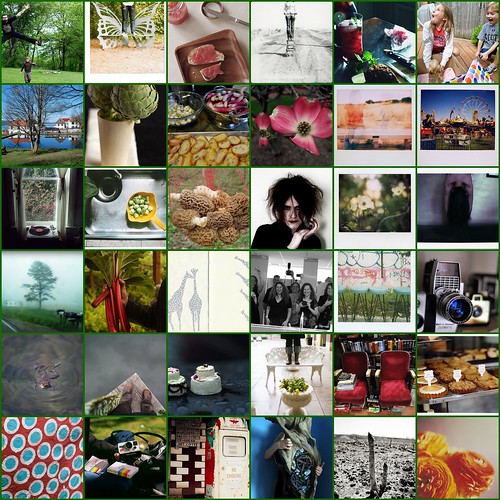
Image by leedav
1. are you ready?, 2. Butterfly, baby, well you've got it all., 3. my last jar, 4. Range Road, 5. sunday, 6. daisy002, 7. Untitled, 8. artichokes, 9. Bread, turnips and radish, 10. DETAIL ORIENTED, 11. yield, 12. only two tickets, 13. UF07, 14. in the sink, 15. bag o' shrooms, 16. [05.06.09] "I've been looking so long at these pictures of you...", 17. ???//365 : white dogwood, 18. growing roots, 19. Untitled, 20. the first rhubarb from our garden, 21. day dreams, 22. {166/365} let us eat cake, 23. {169/365} touching, 24. YIP: 05.04.09, 25. swim, 26. raft, 27. i'll never have that recipe again, 28. HBM., 29. chairs, 30. pastries, 31. YIP 365.55 :: Wrinkled fabric, 32. for the love of polaroid, 33. sharp-cheese and cigarettes, 34. Driftwood (again), 35. Untitled, 36. one trick pony
Created with fd's Flickr Toys.
Tidak ada komentar:
Posting Komentar